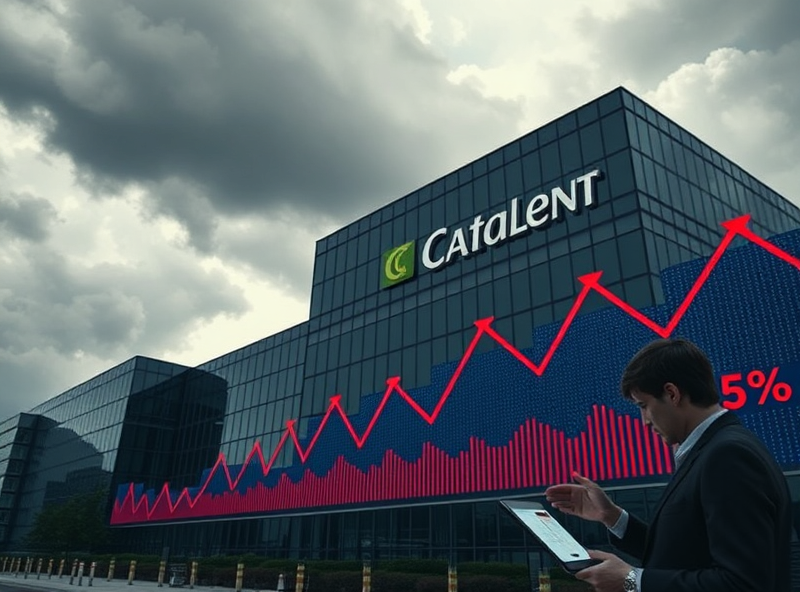
Catalent Stock Crash: What Really Happened to This Pharma Solutions Giant?

In recent months, Catalent Inc. (NYSE: CTLT), a major player in the pharmaceutical solutions industry, has faced a significant downturn in its stock price. Once considered a key partner in the COVID-19 vaccine rollout and a leader in drug development and delivery technologies, Catalent’s sudden stock crash has left many investors and industry watchers puzzled. In this blog post, we’ll explore what really happened to Catalent, the factors behind its stock decline, and what the future might hold for this once-thriving company.
Who is Catalent?
Catalent is a global provider of advanced delivery technologies, development, and manufacturing solutions for drugs, biologics, gene therapies, and consumer health products. Headquartered in Somerset, New Jersey, the company has been instrumental in supporting pharmaceutical giants like Moderna and Johnson & Johnson during the COVID-19 pandemic. Catalent’s core services include drug formulation, clinical supply services, and commercial manufacturing.
What Triggered the Stock Crash?
Catalent’s stock began to decline sharply in early 2023, and the downward trend continued into 2024. Several key factors contributed to this:
1. Operational Challenges: Catalent reported significant issues at several of its manufacturing facilities, including production delays and quality control problems. These disruptions led to missed revenue targets and increased costs.
2. Management Turnover: The company experienced a wave of executive departures, including the resignation of its CEO in mid-2023. Leadership instability often raises red flags for investors, especially in highly regulated industries like pharmaceuticals.
3. Financial Restatements: Catalent announced it would need to restate previous financial results due to accounting errors. This announcement eroded investor confidence and raised concerns about internal controls.
4. Declining COVID-Related Revenue: As the pandemic subsided, demand for COVID-19 vaccine production and related services dropped significantly. Catalent, which had heavily invested in pandemic-related infrastructure, struggled to pivot back to pre-pandemic operations.
Market Reaction and Investor Sentiment
The market responded swiftly to these developments. Catalent’s stock plummeted more than 60% from its 2022 highs. Analysts downgraded the stock, and short interest increased as traders bet against the company’s recovery. Institutional investors began reducing their holdings, further pressuring the stock price.
Is There a Path to Recovery?
Despite the turmoil, Catalent is not without hope. The company has initiated a comprehensive operational review and brought in new leadership with a mandate to restore stability. Additionally, Catalent still holds long-term contracts with major pharmaceutical firms and has a strong presence in biologics and gene therapy manufacturing—sectors expected to grow significantly over the next decade.
Some analysts believe that if Catalent can resolve its internal issues and regain customer trust, it could recover a portion of its lost market value. However, this will likely be a slow and challenging process.
What Investors Should Watch
If you’re considering investing in Catalent or currently hold shares, here are a few key indicators to monitor:
– Progress on financial restatements and improved transparency
– Stability and experience of the new executive team
– Recovery in production capacity and quality control metrics
– Renewed or expanded contracts with major clients
– Industry trends in biologics and advanced drug delivery
Conclusion
Catalent’s stock crash serves as a stark reminder of how quickly fortunes can change in the pharmaceutical industry. While the company’s challenges are serious, they are not necessarily insurmountable. With strategic leadership and operational improvements, Catalent could still reclaim its position as a leader in pharma solutions. However, investors should proceed with caution and stay informed as the situation evolves.
Disclaimer
This article is for informational purposes only and does not constitute financial, investment, or medical advice. The content is based on publicly available information and should not be relied upon for making investment decisions. Always consult with a licensed financial advisor before making any investment.






